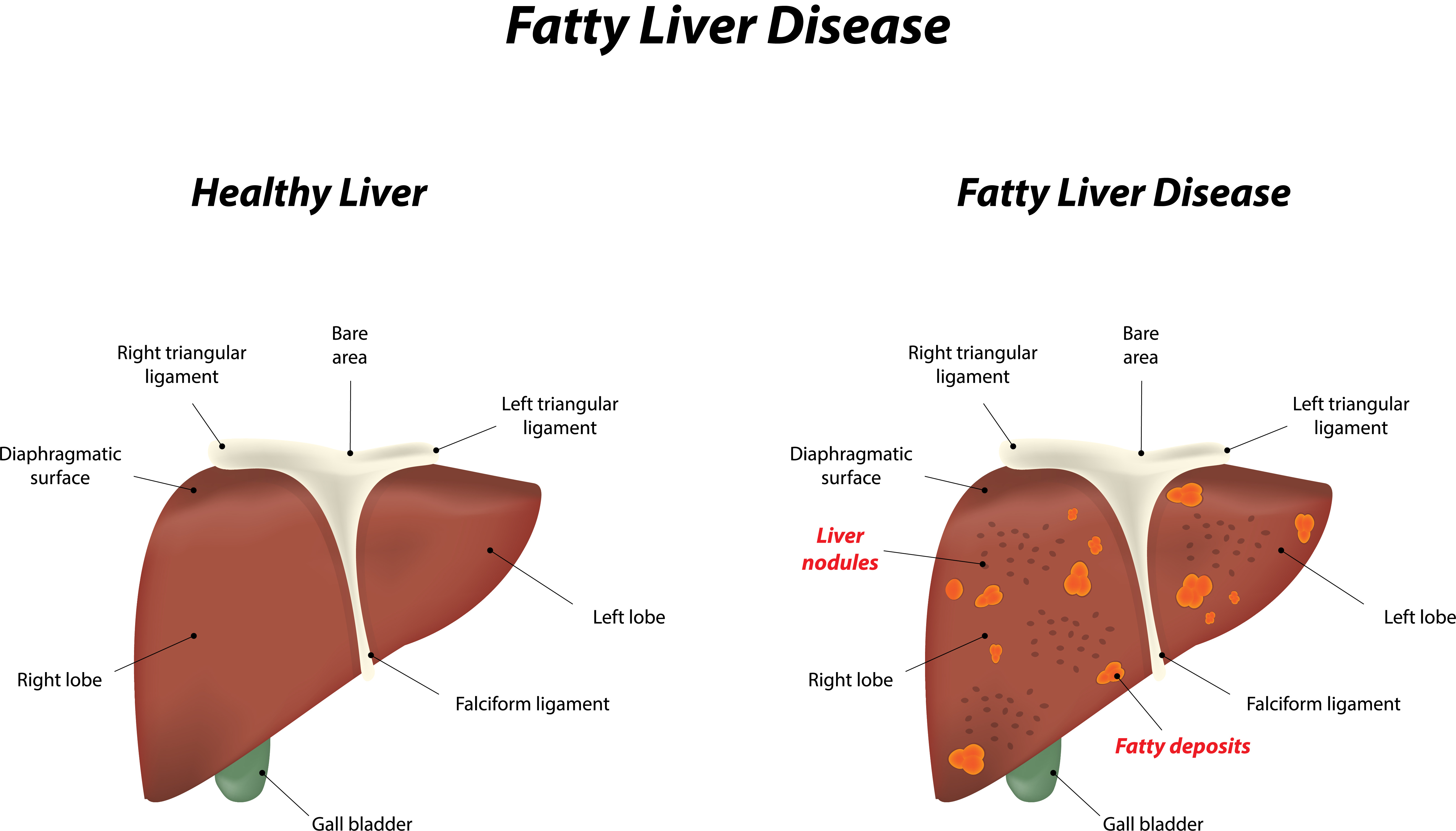- Date Published:
- Category: Doctor's Corner, Health Awareness
NASH Awareness Day: Fatty Liver Q&A
International NASH Day is on June 10th/today and The Liver Institute is joining in the worldwide effort to raise awareness about NASH, which is the advanced form of nonalcoholic fatty liver disease (NAFLD). We’ve asked two of the Institute’s physicians, Dr. Mangesh Pagadala and Dr. Ashwini Mehta the most vital questions about these fast growing diseases.
What is NAFLD?
Dr. Mehta: NAFLD is a condition where there is too much fat built up in the liver in people who drink little to no alcohol. It is increasingly common, especially here in the United States. In fact, it is the most common form of chronic liver disease, affecting about a quarter of the population.
What is NASH?
Dr. Mehta: When NAFLD is left untreated, it can lead to NASH, nonalcoholic steatohepatitis. So a simple way to think of the difference between these two acronyms, is NASH is the advanced form of NAFLD.
NASH is caused when that extra fat turns into inflammation (swelling in the liver) and fibrosis (scarring) of the liver. NASH can get severe enough that it leads to cirrhosis or liver cancer, which could lead to the patient requiring a liver transplant.
What are the stages of NASH?
Dr. Pagadala: NALFD is an umbrella term to describe the accumulation of fat within the liver in people with “metabolic syndrome” who drink little or no alcohol. The disease by itself is a spectrum and can be found in different stages.
The initial stage is the presence of fat in the liver which is known as “steatosis”. The accumulation of fat causes harmful chemicals to be produced which leads to inflammation and the next stage which is called NASH. If left untreated, the healthy liver is replaced by scar tissue called “fibrosis”. Over time the entire liver becomes replaced with scar tissue culminating in the final stage known as “cirrhosis” of the liver. Cirrhosis can lead to complications including liver failure and cancers

How common are NAFLD/NASH?
Dr. Pagadala: Unfortunately, due to the worsening epidemic of obesity across the globe this disease is becoming very common. It can affect all age groups including younger individuals.
Up to 90 million people in the United States and one-third of the world’s population suffer from fatty liver disease. Roughly 25 percent of the people with fatty liver disease can develop the more severe NASH making it the leading cause for cirrhosis and liver transplantation across United States in the next few years
What are the risk factors?
Dr. Mehta: NASH and NAFLD are more common in people with obesity (a BMI greater than 30), conditions related to obesity such as high blood pressure, high cholesterol, and type 2 diabetes. Additionally, people of Hispanic origin have higher occurrences of NASH and NAFLD. It’s important to talk to your primary care physician about all the factors - obesity, eating habits, genetics, physical activity and metabolic syndrome.
What are the symptoms of NAFLD/NASH?
Dr. Mehta: In the early stages, there are zero to minimal symptoms, which is a big part of why it goes undetected. Often the only way to catch NAFLD or NASH in the earlier stages is through blood work which would reveal elevated liver enzymes. Creating awareness about this part is key. If more people and primary care physicians had this on their radar, the results would be more diagnoses in the earlier stages.
Dr. Pagadala: Once enough damage (cirrhosis) to the liver has occurred, patients may exhibit more obvious symptoms such as dark urine, jaundice (yellowing of skin and whites of eyes), itchy skin and swelling of the abdomen.
How are NAFLD/NASH diagnosed?
Dr. Pagadala: A diagnosis of NAFLD is usually made using a blood test and imaging such as an ultrasound or CT scan of the abdomen. There has been a breakthrough more recently in diagnosing the more severe NASH. Previously, a liver biopsy was required, but advancements in technology have led to less invasive methods such as ultrasounds and MREs (magnetic resonance elastography).
What happens if I or a loved one is diagnosed with NAFLD/NASH?
Dr. Mehta: At present, there are no medications approved for treating these conditions. However, if the condition is caught early on it is possible to prevent disease progression through lifestyle changes, namely diet and exercise. The amount of fat in the liver can be reduced by making healthy food choices, limiting portion sizes and frequent physical activity.
Dr. Pagadala: If it’s a later stage diagnosis be sure and have a discussion with your doctor about the possibility of enrolling in a clinical trial. The Liver Institute is known for our work in research and clinical trials on fatty liver disease, so I always discuss this with my patients. Much of the treatment and discussion will focus on managing the various complications associated with this condition. Periodic blood work and ultrasounds will likely be needed to monitor the disease progression. If liver function is compromised severely enough, the discussion could shift to exploring a liver transplant.
What are the next steps?
Dr. Mehta: Awareness is everything. Once someone is aware they can become their own health advocate. They now have the knowledge to keep an eye on their nutrition and overall fitness or to ask the necessary questions at the next check up. NAFLD is real, common and on the rise, but we can fight it with awareness.
About Dr. Mehta and Dr. Pagdala
Dr. Mehta and Dr. Pagadala specialize in the management of fatty liver/NASH/NAFLD, viral hepatitis, cholestatic and autoimmune liver diseases, complications of portal hypertension, cirrhosis, hepatocellular carcinoma, adult liver transplantation, medical complications after liver transplantation, and other gastrointestinal disorders.


